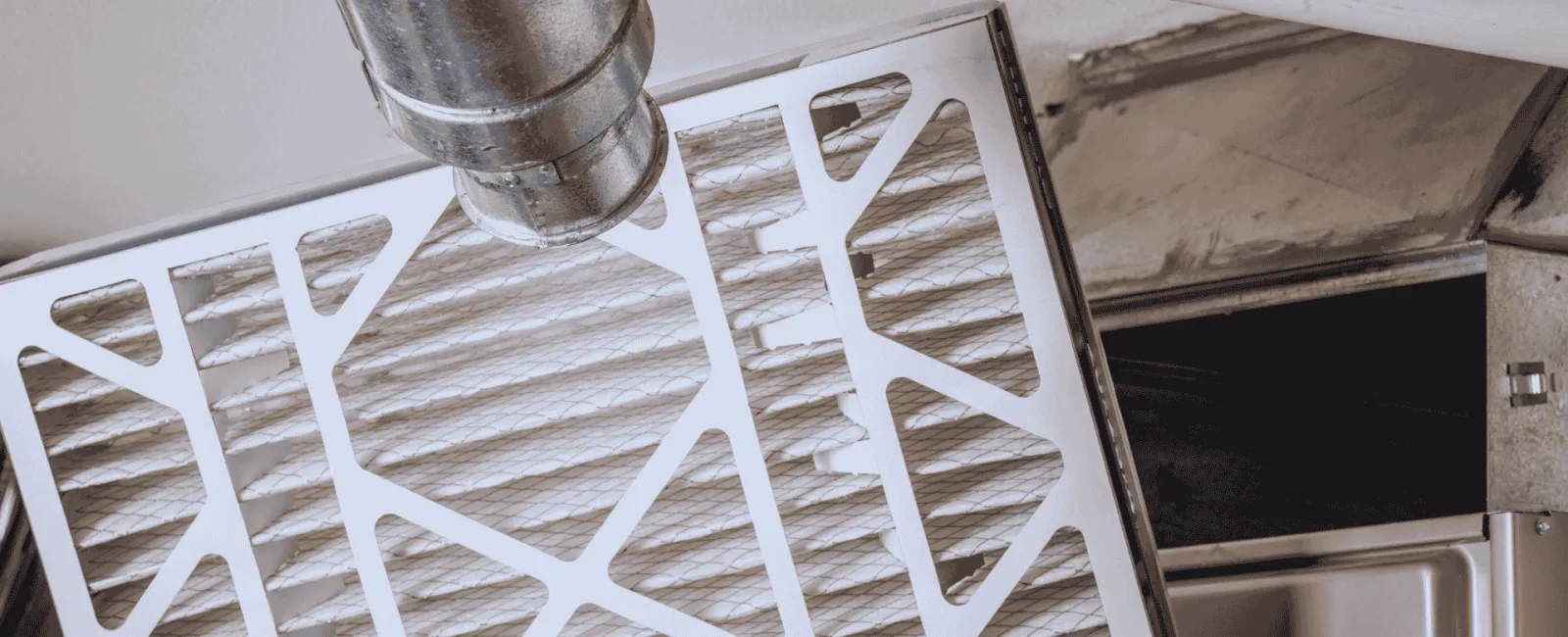Every furnace has a natural service life, and even well-built heating systems eventually start showing their age. As the years pass, performance begins to decline, repairs become more common, and energy efficiency drops compared to modern equipment. Many homeowners start thinking about furnace lifespan when they notice their system running longer than usual, struggling to keep up with colder temperatures, or producing inconsistent airflow throughout the home. Understanding how long furnaces typically last and what directly influences their lifespan helps you make informed decisions before the system fails unexpectedly during peak winter.
How Long Do Furnaces Last on Average?

Most furnaces last between 15 and 20 years, but this estimate varies depending on fuel type, usage patterns, and ongoing care. Some systems fail earlier due to neglected maintenance or poor installation, while others continue operating into their early twenties with only minor issues. It's important to remember that a furnace may still run past twenty years, but its efficiency will decline and energy use will increase. An aging furnace simply cannot match the performance, safety features, and lower operating costs of modern high-efficiency systems.
- Gas furnaces: 15-20 years
- Electric furnaces: 20-25 years
- Oil and propane furnaces: 15-20 years
Homeowners who schedule yearly maintenance visits and change their filters regularly often see their systems last several years longer than those who wait for repairs to appear. Proper care not only prevents breakdowns but also protects critical internal components from premature wear, extending the furnace's lifespan and maintaining consistent comfort throughout the home.
Gas Furnace Lifespan Explained
Gas furnaces are extremely common across the country, and their average lifespan falls between fifteen and twenty years. Because these systems rely on combustion, they are exposed to higher internal temperatures and greater component stress. Over time, heat exchangers can develop cracks, burners can become clogged with soot, igniters may fail, and flame sensors may lose accuracy. These issues are expected in older systems, but if they occur frequently, they often indicate the furnace is reaching the end of its usable life.
As gas furnaces age, they may also cycle more frequently, produce uneven heat, or develop noticeable noises during operation. If your system is in the 15- to 20-year age range and you've started scheduling repairs more than once a season, it may be more cost-effective to evaluate modern heating options through professional furnace installation. Newer systems offer better airflow, quieter performance, improved safety features, and substantially higher energy efficiency than older gas models.
Electric Furnace Lifespan Explained
Electric furnaces generally last longer than gas systems because they do not rely on combustion. With fewer components exposed to intense heat, electric models experience less mechanical wear overall. For this reason, most electric furnaces last between 20 and 30 years. The downside is that electric heat can be more expensive to operate, depending on local electricity rates, so an older electric furnace may still be inefficient even if it continues running reliably.
Electric furnaces rely heavily on heating elements, blower motors, and electrical controls. When these parts wear down, homeowners may notice longer heating cycles, inconsistent temperatures, or unexpected system shutdowns. Because these failures often occur gradually, regular furnace maintenance is essential. A well-maintained electric unit can provide decades of safe, dependable performance, but once efficiency begins to decline, upgrading to a newer system often results in significant energy savings.
Oil and Propane Furnace Lifespan Explained
Oil and propane furnaces typically last fifteen to twenty years. These systems require more frequent cleaning and adjustment than gas or electric models because their fuel naturally produces more residue. Soot buildup inside the combustion chamber can reduce efficiency, stress internal components, and contribute to early failure if not addressed through routine maintenance. If an older oil or propane furnace begins struggling to maintain consistent heat, produces strong odors during operation, or needs frequent repairs, it may be approaching the end of its service life.
Fuel quality also affects how long oil and propane systems last. Impurities, moisture, or sediment can lead to clogged nozzles, corroded chambers, or burner failures. When these problems become recurring, homeowners often find that upgrading to a newer system offers better reliability and improved heating performance throughout the home.
Factors That Influence Furnace Longevity
A combination of installation quality, system workload, and ongoing maintenance influences furnace lifespan. Even two identical systems installed in the same neighborhood can age at completely different rates depending on these factors.
- Installation quality: Proper sizing and correct duct design are crucial. Poor installation is one of the leading causes of early furnace failure.
- Maintenance frequency: Annual professional tune-ups significantly extend furnace lifespan.
- Filter changes: Dirty filters restrict airflow and overwork the blower motor and heat exchanger.
- Climate and usage: Homes in colder regions naturally wear out furnaces sooner due to longer heating seasons.
- Ductwork condition: Leaky, restrictive, or poorly insulated ducts reduce system efficiency and increase strain.
- Thermostat habits: Frequent high-temperature settings force the furnace to run longer and harder.
- Moisture exposure: High indoor humidity and poor ventilation contribute to rust and electrical corrosion.
The more consistently you care for your furnace, the greater the chance it has of reaching the upper end of its lifespan. Proper airflow, clean components, and stable electrical connections all play important roles in keeping the system healthy over time.
How Climate Affects Furnace Lifespan
One of the most overlooked factors influencing furnace lifespan is local climate. In colder states, furnaces may run for more than two thousand hours per year. That amount of system workload naturally leads to quicker wear on blower motors, ignition parts, and heat exchangers. By comparison, homeowners in warmer climates may use their furnace only a few months per year, allowing the system to experience significantly less strain.
However, warmer climates bring their own challenges. In humid regions, moisture can cause rust and corrosion inside the furnace cabinet. Homes that rely on heat pumps for most of the year may not use their furnace often, but improper storage conditions or lack of maintenance can still lead to early problems once the furnace is needed. Regardless of region, furnaces last longer when they receive appropriate maintenance for local weather conditions.
Signs Your Furnace Is Near the End of Its Life
Even a well-maintained furnace will eventually need to be replaced. Recognizing these signs early helps avoid emergency breakdowns and costly mid-season repairs.
- Age 15 to 20 years: Most systems begin to lose efficiency and reliability within this range.
- Frequent repairs: Multiple service calls indicate internal components are wearing out simultaneously.
- Uneven heating: Certain rooms may feel colder even when the system is running normally.
- Noticeable noises: Grinding, banging, squealing, or rattling sounds often signal mechanical deterioration.
- Rising utility bills: Older furnaces naturally lose efficiency and require more energy to maintain a temperature.
- Slow heating cycles: If the system takes longer than usual to warm the home, it may be aging out.
- Burner flame discoloration: Yellow or orange flames instead of blue can indicate improper combustion.
- Visible rust or cracks: These are serious signs of advanced wear and often signal the need for replacement.
If your furnace displays several of these symptoms and is already within it's typical lifespan, it's a strong indication that exploring furnace replacement options may be the smarter, more cost-effective path.
When You Should Repair vs. Replace Your Furnace
Choosing between repairing and replacing a furnace becomes easier when you understand the common guidelines that HVAC professionals use. Age, repair cost, and overall system performance typically determine the best option.
1. Follow the 50% Repair Rule
If a repair costs 50% or more of the price of a new furnace, replacement is typically the better financial decision, especially for systems older than 12 years.
2. Consider Total Repair Frequency
If your system breaks down more than twice in a single heating season, it usually signals that internal parts are failing due to age. Ongoing furnace repairs in older units rarely provide long-term reliability.
3. Evaluate Overall Efficiency
Older furnaces simply cannot match modern energy standards. Replacing an aging system often leads to noticeably lower monthly heating bills and better airflow throughout the home.
4. Factor in Safety Concerns
Issues like a cracked heat exchanger or improper combustion indicate immediate safety risks. In these cases, professional replacement is typically required.
How Much Does Furnace Replacement Cost?
Furnace replacement cost depends on fuel type, system size, efficiency rating, and installation complexity. On average, homeowners can expect:
- Gas furnace replacement: $3,500-$7,500
- Electric furnace replacement: $2,500-$6,000
- Oil or propane furnace replacement: $4,000-$8,000
While high-efficiency systems cost more upfront, they offer major long-term savings thanks to improved airflow, quieter performance, and significantly lower heating bills. Many homeowners find that a modern furnace pays for itself through energy savings over its lifespan.
These prices are estimated and do not resemble any actual pricing**
How to Extend the Life of Your Furnace
With consistent care, homeowners can add years of reliable performance to their furnace. These steps are essential for maximizing lifespan and preventing costly mid-season problems:
- Replace filters every one to three months: Clean filters protect the blower motor and improve airflow.
- Schedule annual tune-ups: Professional furnace maintenance identifies developing issues before they lead to breakdowns.
- Seal duct leaks: Reduces unnecessary system strain and helps maintain consistent temperatures.
- Improve home insulation: Reduces furnace workload and keeps heat inside where it belongs.
- Avoid closing too many vents: This can reduce airflow and put stress on the system.
- Repair airflow issues quickly: Strange odors, noises, or short cycling should be inspected promptly.
Maintenance Schedule for Maximum Lifespan
Following a consistent maintenance schedule helps ensure your furnace performs safely and efficiently throughout its life.
- Monthly: Check and replace air filters.
- Seasonally: Inspect registers, vents, and thermostat settings.
- Annually: Schedule a comprehensive furnace tune-up for cleaning, calibration, and part inspection.
- Every 2 to 3 years: Have the ductwork inspected for leaks, blockages, and insulation issues.
FAQs About Furnace Lifespan
How long do furnaces usually last?
Most furnaces last 15 to 20 years, depending on the fuel type, installation quality, and maintenance frequency. Electric units tend to last the longest.
Can a furnace last thirty years?
While some units operate into their late twenties, efficiency usually drops significantly, and repairs become more frequent. In most cases, replacing a system after 20 years offers better long-term value.
What shortens furnace lifespan?
Neglected maintenance, dirty filters, poor airflow, undersized ductwork, high humidity, and improper installation are the most common causes of early furnace failure.
Is a 20-year-old furnace too old?
A 20-year-old furnace is typically past its expected lifespan. If it shows signs of declining performance, it is often more cost-effective to explore system replacement.
How often should a furnace be replaced?
Most homeowners replace their furnaces every 15 to 20 years. Systems experiencing frequent breakdowns or high energy costs may need replacement sooner.
Does maintenance really extend furnace lifespan?
Yes. Annual tune-ups ensure components are clean, lubricated, and safe. Homes that schedule regular furnace maintenance consistently see longer system life and fewer breakdowns.
Final Thoughts: How Long Do Furnaces Really Last?
Most furnaces operate reliably for about 15 to 20 years, but this depends heavily on maintenance and how hard the system works each winter. Once a furnace reaches this age range, efficiency tends to decline, repairs become more frequent, and performance often becomes inconsistent. Understanding the lifespan of furnaces and recognizing the signs of aging equipment helps you plan ahead and avoid costly, stressful breakdowns during the peak heating season.
Whether you need a targeted furnace repair, expert guidance on selecting a replacement, or ongoing furnace maintenance to extend the life of your existing system, working with a trusted HVAC professional like MR. HVAC ensures long-term comfort and reliable heating for your home.

